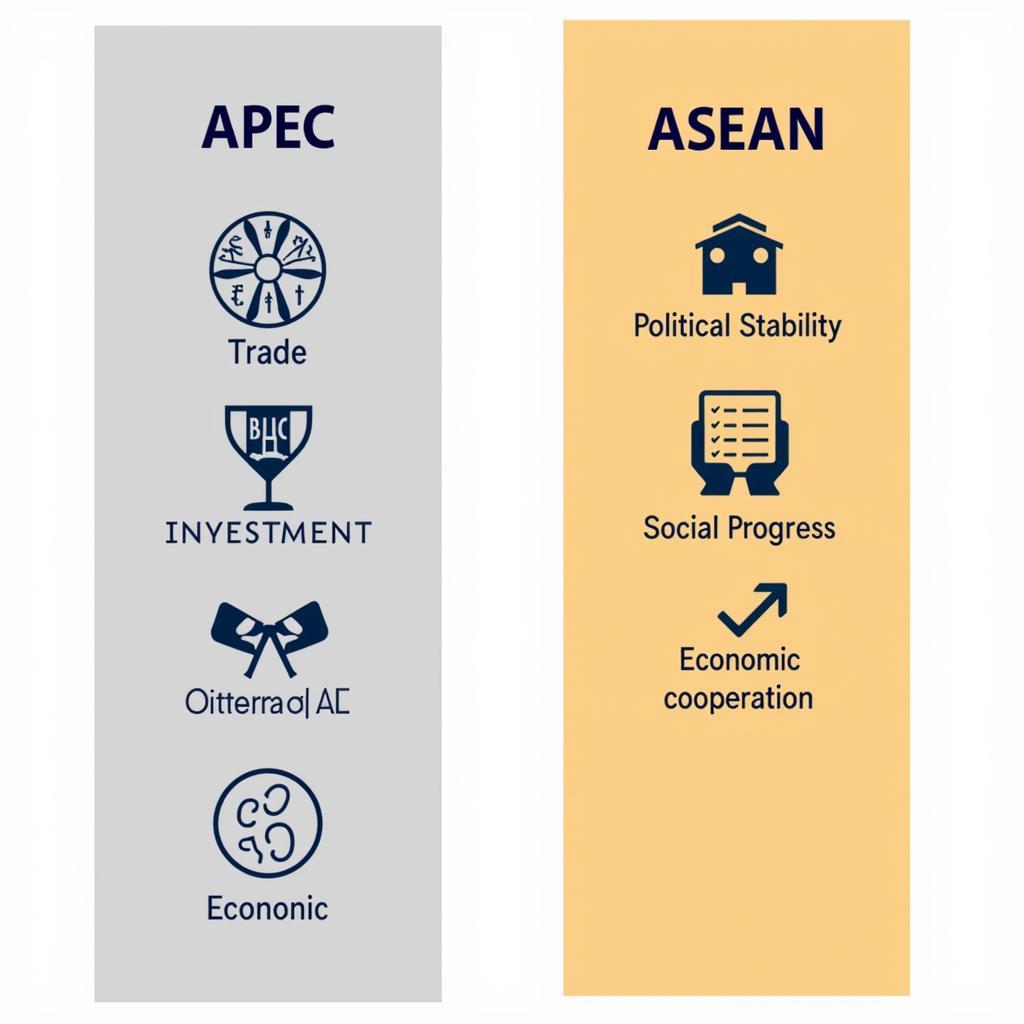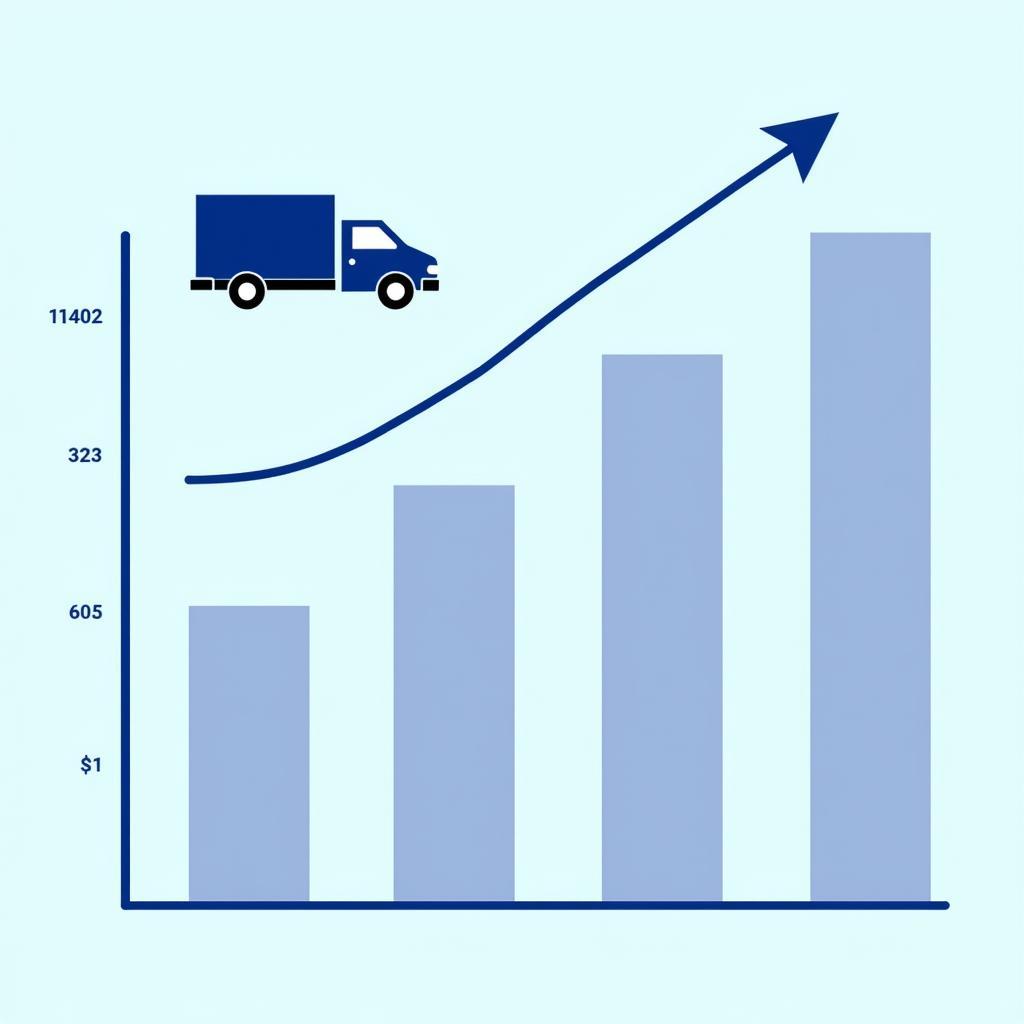“Ano Ang Apec At Asean?” translates to “What are APEC and ASEAN?” in Tagalog. This question highlights a growing curiosity about these two key players in the Asia-Pacific region. Both organizations aim to foster economic growth and cooperation, yet they differ significantly in their scope, membership, and approach. This article will explore the nuances of APEC and ASEAN, their individual roles, and how they contribute to the dynamic landscape of Southeast Asia and the broader Asia-Pacific.
APEC and ASEAN: Distinct yet Complementary
APEC, the Asia-Pacific Economic Cooperation, is a forum for 21 Pacific Rim member economies that promotes free trade throughout the Asia-Pacific region. Established in 1989, APEC’s primary goal is to reduce trade barriers and facilitate investment to enhance economic growth and prosperity for all its members. It operates on a non-binding basis, encouraging consensus-building and voluntary cooperation among diverse economies, including giants like the United States, China, and Japan, as well as smaller nations.
ASEAN, the Association of Southeast Asian Nations, focuses exclusively on the ten Southeast Asian nations. Founded in 1967, ASEAN’s mandate extends beyond mere economic cooperation. It aims to promote political, social, and cultural collaboration among its members. ASEAN strives for regional peace and stability, advocating for peaceful dispute resolution and fostering a sense of shared identity among its diverse member states. Unlike APEC’s non-binding approach, ASEAN has developed more formalized agreements and institutions, reflecting a deeper level of integration.
[asean apec 2016]
Key Differences between APEC and ASEAN: Scope and Focus
Membership and Geographic Scope
One key difference lies in their membership and geographic scope. APEC boasts a wider reach, encompassing economies across the Pacific Rim. ASEAN, on the other hand, concentrates solely on Southeast Asia, nurturing a closer bond among its geographically proximate members.
Primary Objectives
While both organizations share the goal of economic development, their primary objectives differ. APEC prioritizes trade liberalization and investment facilitation, aiming to reduce tariffs and streamline customs procedures. ASEAN, while committed to economic integration, also emphasizes broader regional cooperation in areas such as security, culture, and social development.
 Comparing the Focus of APEC and ASEAN: Illustrating the differing priorities of each organization
Comparing the Focus of APEC and ASEAN: Illustrating the differing priorities of each organization
Why Understanding “Ano ang APEC at ASEAN” Matters
Understanding the distinctions between these two organizations is crucial for comprehending the complex dynamics of the Asia-Pacific region. Both APEC and ASEAN play vital roles in shaping the region’s economic and political landscape. Their interconnectedness, particularly through shared members, highlights the importance of collaborative efforts in addressing shared challenges and promoting regional prosperity.
[apec asean 2017]
ASEAN’s Free Trade Area: A Cornerstone of Regional Integration
The ASEAN Free Trade Area (AFTA) is a testament to ASEAN’s commitment to economic integration. AFTA aims to eliminate tariffs and non-tariff barriers among member states, creating a single market and production base. This fosters greater competitiveness and attracts foreign investment, ultimately boosting economic growth within the region.
[apa itu asean free trade area]
The Future of Regional Cooperation: APEC and ASEAN Working Together
The future of regional cooperation hinges on the ability of APEC and ASEAN to work synergistically. Their complementary strengths can be leveraged to address shared challenges, such as climate change, pandemics, and ensuring sustainable development. By fostering dialogue and collaboration, both organizations can contribute to a more prosperous and stable Asia-Pacific region.
[asean architect and apec architect]
Conclusion: APEC and ASEAN – Shaping the Asia-Pacific Future
“Ano ang APEC at ASEAN?” Understanding the answer to this question is paramount to grasping the intricacies of regional cooperation in the Asia-Pacific. While distinct in their scope and approach, both APEC and ASEAN are vital forces driving economic growth, promoting stability, and fostering closer ties within the region. Their continued collaboration holds the key to a prosperous and interconnected future for all member economies.
[ase de eso translate]
FAQ
- What is the main difference between APEC and ASEAN?
- How do APEC and ASEAN contribute to economic growth?
- What are the key challenges facing APEC and ASEAN?
- How does ASEAN promote regional stability?
- What is the significance of the ASEAN Free Trade Area?
- How can APEC and ASEAN collaborate more effectively?
- What is the future of regional cooperation in the Asia-Pacific?
Scenarios:
- Scenario 1: A business owner wants to expand their operations into Southeast Asia. Understanding ASEAN’s regulations and the benefits of AFTA can be crucial for their success.
- Scenario 2: A policymaker needs to understand the overlapping memberships of APEC and ASEAN to develop effective regional trade strategies.
- Scenario 3: A student researching international relations needs to differentiate between the roles of APEC and ASEAN in the Asia-Pacific region.
Further Exploration:
For more information on related topics, please explore our other articles on ASEAN and APEC.
Call to Action:
For any assistance or further inquiries, please contact us at Phone Number: 0369020373, Email: aseanmediadirectory@gmail.com, or visit our address: Thon Ngoc Lien, Hiep Hoa, Bac Giang, Vietnam. Our customer service team is available 24/7.


